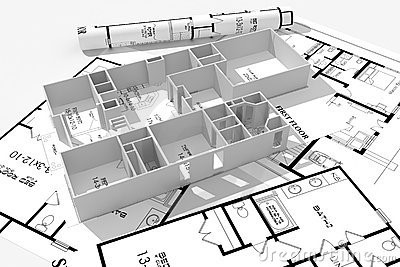Otherwise known as ADDIE, and the most commonly used instructional design model in some form or another. If you are a client or a developer it’s useful to memorise this little acronym to know what’s happening during the development of an eLearning project.
To view an interactive eLearning demo based on this article click here.
ADDIE is the go-to process and has been used for more than 30 years. It’s a solid, been-around-the-block kind of model that’s geared towards meeting specific project goals. It is logical and step-by-step.
A is for Analyse
The real start of training is figuring out if eLearning is the best solution to the problem at hand. Consider this: if you’re going to give a blind man a normal, paper book to study from, you’re not going to get your training goals met, no matter how well written book.
- Identify whether the training is needed at all. Analyse what performance improvements are expected and how they are currently measured.
- Analyse the audience. Put down on paper what the demographics are and other background information there is about the learners.
- Then there is task analysis. The whole eLearning project is broken down into chunks. Think of this as modules, courses, items, sections, chapters, activities, tasks and even as small chunks such as headings and subheadings, for everything you want to include in the eLearning project. This is giving your eLearning developer all the information and content needed that you want covered in the eLearning project.

D is for Design
Now, you have the information you need to create a blueprint. No point in building a solid house if you are not going to plan it out first. At this stage content is gathered and arranged into a skeleton frame for the project.
The culmination of years of technical and theoretical knowledge is useful in this phase for creating pedagogically strong learning experiences. Not just anyone can draw up learning designs if they haven’t taken the time to understand aspects of learning and teaching yet.
- A storyboard is a document which contains information spelling out what will appear on each and every slide. Text, imagery, narration script, interactions, etc. When and where there will be test/quizzes, pictures, sounds, interactions, text, narrations, video, and you name it! Then how many, how often, how difficult, how long.
- Prototyping is the sample creation of the course. Both the client and the eLearning developer get a feel for how the course looks and functions.
D is (also) for Development
Only now is development started. If you do not consider doing the other two steps you are heading for a difficult project indeed. One with unhappy clients, unmet objectives, re-dos and do-overs of whole sections or even the whole project.
Development is done by building the eLearning content with an authoring tool.
- Content creation is making activities, quizzes, interactions and functional navigation that was designed in the previous stage. Content creation at this stage is not writing the learning material itself. That should have been done in Analysis and Design phase.
- Testing happens at this stage too, because developers need to make tweaks and changes along the way the whole time. Most authoring tools come with their own set of frustrating glitches and problems, so work arounds can account for a quarter of the entire development time. Other aspects such as spelling, grammar, learning objectives, navigation and flow are also checked.
I is for implement
You have two choices for implementation and the choice lies in whether or not you need to track and report on learner behaviour.
- Upload the eLearning project directly on to the web. Provide a URL link for your learners. That’s it.
- Upload the eLearning project onto a learning management system (LMS). LMS differ greatly in functionality and appearances so check with your eLearning vendor to discover what functions their LMS provides. The LMS organises your eLearning and tracks if learners completed a module and how long it took them to do so.
E is for Evaluation
Evaluate the success of the eLearning project by determining if your training goals were achieved. If other improvements were realised too, that’s great, but the real measurement is meeting what was set in the Analysis phase.
Now that you have an idea of what is involved in the process you can make an educated estimation of the costs you could be quoted (or you as the developer could quote) for eLearning. Look again at each of these steps and estimate a time and a currency value of each step.
Sound Idea Digital specialises in Learning Management Systems and eLearning development | soundidealearningmanagement.co.za
Sandra is an eLearning Specialist & Content Editor for Sound Idea Digital | sandra@soundidea.co.za
To cite this blog article:
Slabbert, S. 2016, March 30. eLearning Development Process. the official Sound Idea Digital blog [Web log post]. Available: http://blog.soundidea.co.za/articles/eLearning_Development_Process-447.html
Source:
Legault, N. 2015. An Introduction to the ADDIE Model for Instructional Designers. [Online] E-Learning Heroes. Available at: https://community.articulate.com/articles/an-introduction-to-the-addie-model-for-instructional-designers [Accessed 15 Feb. 2016].
[Back]
blog comments powered by Disqus
